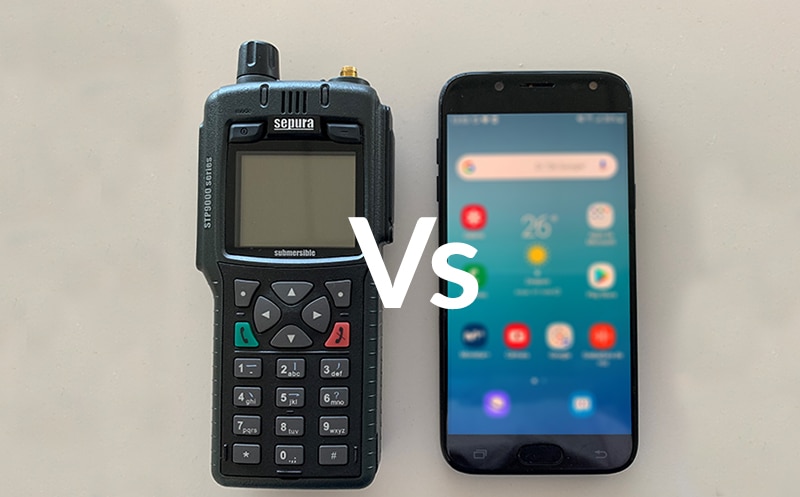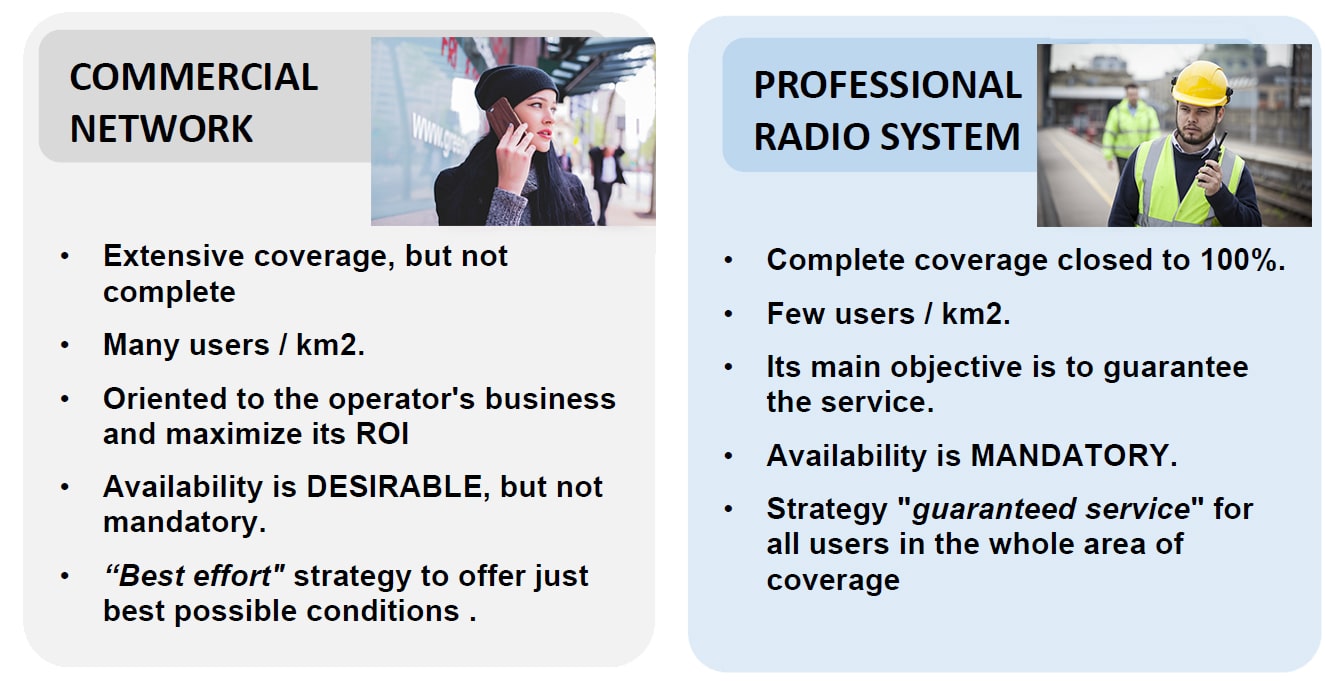In recent years, PoC solutions, Push-to-talk Over Cellular, have been gaining popularity in the telecommunications market. They are based on a mobile phone application that emulates the operation of a trunking system over a broadband network (usually a public cellular network), where the Push-To-Talk (PTT) key allows participation in the communication.
Some of them also include video calls or multimedia services, and a simple search in the Android Market or Apple Store is enough to realize the great development they have experienced, with many proposals on the market, but all of them are proprietary and do not guarantee any kind of interoperability between them.
Given the rise of this technology, it is worth considering whether a PoC solution on a public mobile network can replace a professional communication service based on technologies such as TETRA. Let’s see if this type of solution can offer all the functionalities and service that professional users need.
PRIVATE NETWORK Vs COMMERCIAL NETWORK, A KEY CONCEPT.
Keep it in mind that the functionality of PoC applications only makes use of the network’s data capacity and that there is no integration with the network infrastructure, their performance will depend entirely on the resources that the operator is able to offer, resources that, on the other hand, have to be shared with the rest of the users of the commercial network.
In the face of this, the main advantage provided by a private TETRA network is to guarantee the availability of communications and that any service considered critical will never have to compete with other non-priority users to obtain the resources necessary to carry out its operation. If in commercial networks the benefit per subscribed user prevails, in the PMR the main objective is to guarantee the service.
Thus, the fundamental design criterion of TETRA networks is availability, which must be 99.999% guaranteed in any situation, something that does not occur in commercial networks, which are deployed according to the principles of cost efficiency and operator benefit.
This is a particularly valuable feature in critical situations. Think of large demonstrations, disasters, security operations or massive sport events… all of these are critical situations that require absolute control by security forces, whose communications cannot be affected by situations of congestion that could deteriorate their availability, increasing the error rate in the call establishment or delays in communication.
Likewise, as opposed to the criteria of operators who generally design their networks leaving rural and sparsely populated areas outside their area of interest, PRM networks offer higher levels of coverage since, by giving priority to operational needs, they include sparsely or not at all populated areas, guaranteeing a homogeneous minimum level of service throughout the territory. Similarly, TETRA networks also offer lower latencies and higher successful call rates.
The TETRA standard itself also supports a number of mission-critical features not found in commercial networks. Thus, private communications standards such as TETRA natively incorporate the definition of communications priorities and emergency calls, features that are not offered by public operator infrastructures. The direct mode, which allows two terminals that have lost network coverage talking directly to each other, is a capability only found in PMR networks, which also offer more efficient group call management and better transmission rates.
If we consider other factors such as the significantly higher terminal power in professional equipment, the interoperability offered by TETRA as an open standard, or the higher levels of security and encryption offered by PMR systems, the clear conclusion is that a PoC solution deployed over a commercial network can never replace a private PMR communication service such as TETRA in a critical environment.
The reasons for this, which are explained throughout the article, are summarised both in the nature of commercial networks and in a series of shortcomings that result in: inefficiency in the management of group communications, absence of network and service availability criteria for private users, lack of mechanisms for priority and emergency management, unacceptable latencies in call establishment, no direct modes of communication between users and lack of interoperability between PoC solutions.
PoC, SUITABLE FOR CERTAIN ENVIRONMENTS, BUT NOT FOR CRITICAL SECTORS
In critical environments, the shortcomings of PoC solutions are translated into serious security problems arising from the lack of communication, for example, the inability to manage coordination groups with multiple users, or the simple failure of communications in emergency situations.
Thus, when the final use of the solution is the management of communications in professional sectors such as Public Safety and Emergencies, a PoC solution over a public commercial network is not valid and it will be necessary to rely on a private system based on a standard technology such as TETRA.
However, PoC solutions over a commercial network can have value in cases of “business critical” communications, where lack of availability, delays, low user numbers are acceptable, or where emergency situations never occur.





